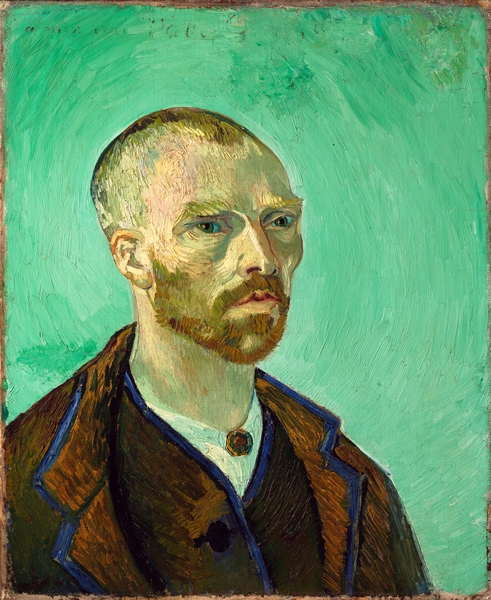VAN GOGH SELF PORTRAITS

Self Portrait Dedicated to Paul Gauguin (1888)
Self Portrait Dedicated to Paul Gauguin (1888)
This self portrait was painted in Arles in the South of France, Vincent had encouraged his fellow artists to paint themselves, and then to exchange the canvases. He had recieved aportrait from Gauguin and this was his response. He described the process of creating this painting in several letters to his brother Theo, an art dealer in Paris. Van Gogh explained how he was influenced by Japanese woodblock prints, shaping his face and using the vibrant colour tones found in such prints. He added color effect with the contours of his jacket and painted the background in a “pale Veronese green” without shadows.
His friendship with Gauguin ended soon after with a catastrophic drunken argument, Vincent took a razor and severed part of his left ear, later presenting it as a gift to the prostitute who lived nearby. Gauguin then sold this painting for three hundred francs.

Self Portrait with Bandaged Ear (1888)
On 23 December 1888, Vincent cut off part of his left ear in a state of total confusion after a drunken argument with Gauguin. It was the first of a series of mental breakdowns. However, he didn’t show himself as a sick, broken man for the sake of effect or to arouse pity, but he believed that painting would help him to heal.
This self-portrait was painted shortly after Van Gogh he came out of hospital. He is in his studio, looking still and sad, wearing overcoat and a hat, against the December cold. The blank canvas behind him suggests that he’s getting ready to paint more work, the Japanese print on the right was probably a print by Sato Torakiyo, owned by Van Gogh and pinned on the wall in his studio. Japan, much like Arles, was an exotic place of escape in Van Gogh’s imagination.
